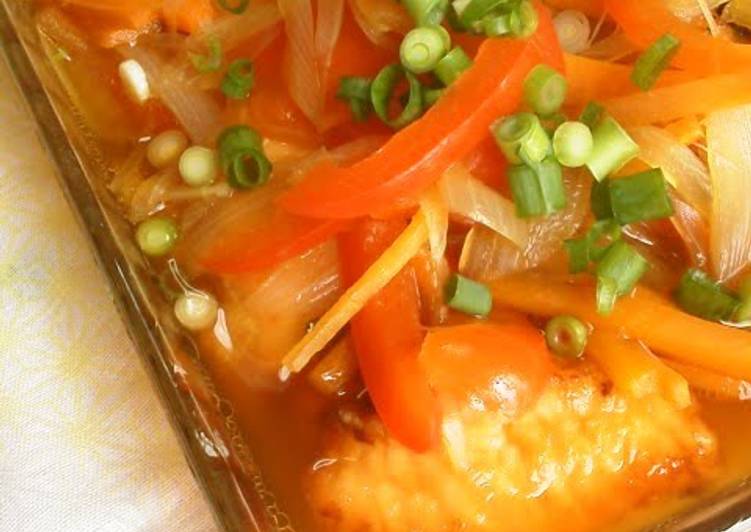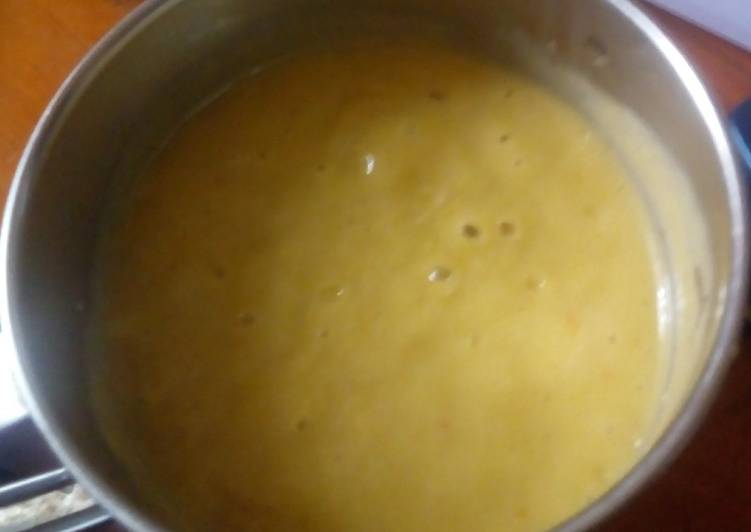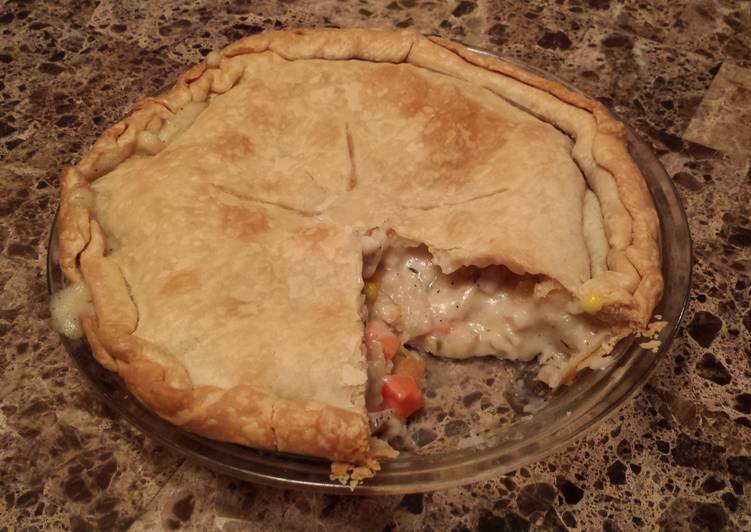
Hey everyone, it’s Drew, welcome to our recipe page. Today, we’re going to prepare a distinctive dish, non-fried marinated nanban - raw salmon and sweet onions using shio-koji. One of my favorites. For mine, I am going to make it a bit unique. This will be really delicious.
Non-Fried Marinated Nanban - Raw Salmon and Sweet Onions Using Shio-Koji is one of the most well liked of current trending meals on earth. It’s simple, it’s quick, it tastes delicious. It’s enjoyed by millions daily. Non-Fried Marinated Nanban - Raw Salmon and Sweet Onions Using Shio-Koji is something that I’ve loved my whole life. They are fine and they look wonderful.
Salmon marinated and tenderized in shio koji, a Japanese fermented ingredient packed with umami. Pre-made shio koji is available in the refrigerated section of most Japanese grocery stores in the West and is sold in Store in a re-sealable plastic bag or (non-reactive) glass or plastic container. When combined with salt it also makes a great marinade that enhances flavor and tenderizes.
To get started with this recipe, we have to first prepare a few components. You can cook non-fried marinated nanban - raw salmon and sweet onions using shio-koji using 13 ingredients and 8 steps. Here is how you cook it.
The ingredients needed to make Non-Fried Marinated Nanban - Raw Salmon and Sweet Onions Using Shio-Koji:
- Take 3 slice Raw salmon
- Get 2 tbsp Shio-koji (salt fermented rice malt)
- Take 1/2 Carrot
- Make ready 1/2 Sweet onion (or regular onions)
- Make ready 1/4 Red or yellow bell pepper
- Take 1 Green onions or scallions
- Prepare 1 Katakuriko
- Prepare Nanban sauce
- Prepare 200 ml Dashi stock
- Get 2 1/2 tbsp Soy sauce
- Prepare 3 tbsp Mirin
- Prepare 2 tbsp Vinegar
- Take 1 and 1/2 tablespoons Sugar
In a very large resealable plastic bag, coat the pork steaks with the shio koji. Seal the bag, pressing out the air. Set the bag in a baking dish and refrigerate overnight. Fermentation is an indispensable process in miso production.
Steps to make Non-Fried Marinated Nanban - Raw Salmon and Sweet Onions Using Shio-Koji:
- Cut raw salmon into thirds, coat it in shio-koji, and let it cure in the refrigerator overnight.
- Mince the green onions and thinly slice the rest of the vegetables.
- Put a light layer of oil (not listed) in a pot, sauté the onions, then the carrots, and then the bell peppers until tender.
- Add all the ingredients of the Nanban sauce into the pot and bring to a gentle boil.
- Evenly coat the raw salmon (without removing the shio-koji) in katakuriko and fry in a pan with oil (about 4 tablespoons, not listed) until crisp.
- Gently remove the excess oil from the salmon and put into a deep dish.
- Add the heated Nanban sauce from Step 4 while still hot and it's ready to serve.
- Marinating the salmon for a minimum of 2 hours (or, if possible, a full day) will blend the flavors together quite nicely.
Not only is it necessary in fermentation, but when combined with other The enzymes also decompose starches to draw out the sweetness from ingredients. All non-OC (non-original-content) artwork posts should be in the form of a direct link(URL) to the source (the original post by the artist). Artist name should be included in the title. At most ONE non-OC artwork is allowed per WEEK for every submitter. Nanbanzuke is marinated fried fish in vinegar sauce with vegetables. "Nanban" means "foreign," specifically indicating Portugal and Spain, coming from a period back in "Zuke" (or "dzuke") means marinated.
So that’s going to wrap it up for this special food non-fried marinated nanban - raw salmon and sweet onions using shio-koji recipe. Thanks so much for reading. I’m confident that you can make this at home. There is gonna be interesting food at home recipes coming up. Remember to save this page in your browser, and share it to your family, friends and colleague. Thanks again for reading. Go on get cooking!


